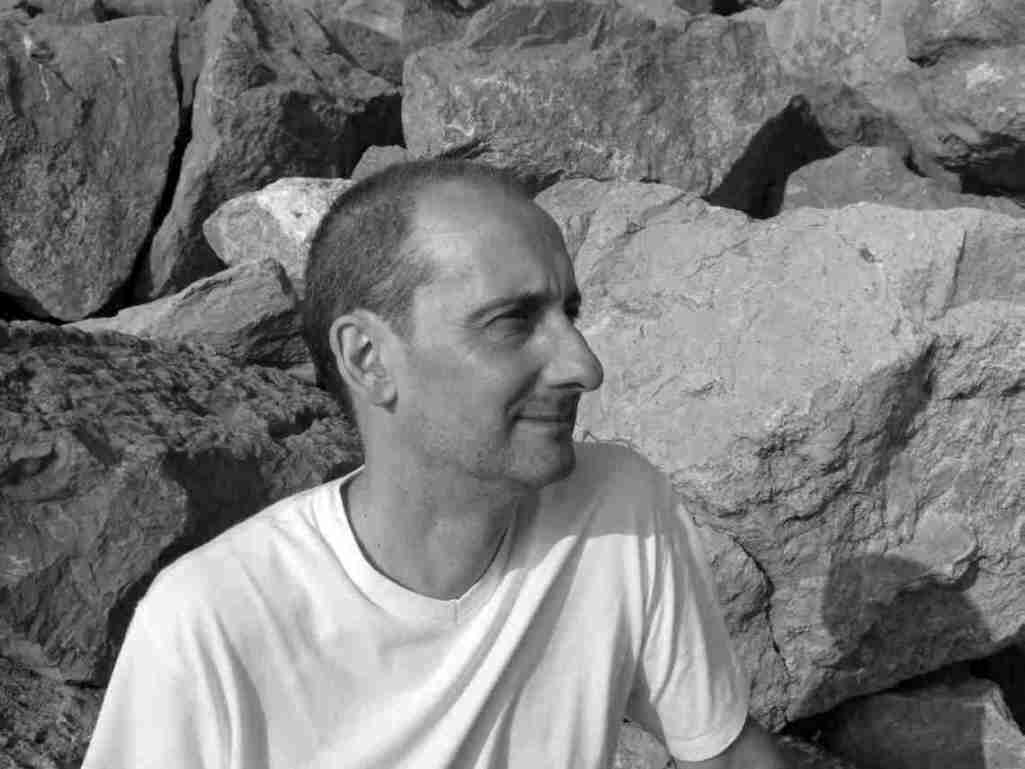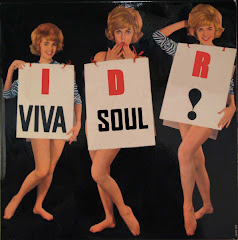 Kim Weston What's Going To Happen People
Kim Weston What's Going To Happen PeopleThe above is my favourite track off Kim's Big Brass Four Poster album. I dug this out after being reminded that the Hastings Street Jazz Experience are backing her on this album.
This was during the period when Kim recorded an album with the group:
 Hastings Street Jazz Experience Ja Mil
Hastings Street Jazz Experience Ja Mil
Kim Weston was interviewed by Dave Cole for In The Basement Magazine Issue 40 Nov 2005 - Jan 2006. This is what Dave wrote:
"Opting to return to Detroit and deciding to put recording and performing second to working in the city for the underprivileged community. She did however take time to cut the record, 'Detroit That's My Home Town', released on Rahkim Records. "That was supposed to be my label," she advised. "I had learned about production but I didn't know anything about the record business. The 'Rah' part of the label came from the young man who helped me and funded the money." There was also an impossible-to-find 1976 jazz album, on which Kim sings with a group called the Hastings Street Jazz Experience. "I'm amazed you know about that," she exclaimed. "I'm sure they'll be excited to even know that you're interested. It was some jazz musicians, local jazz musicians in Detroit. They are still there to this day and they got together to put this project on and they came and asked me if I would sing with them. It got a release but it wasn't like a record company that put it out, I think it was just some sort of private recording."
Ja Mil was released on Jazzman Records Spiritual Jazz CD. Here's the sleevenotes from that CD:
Detroit's Hastings Street Jazz Experience exemplifies the political and social nature of many underground jazz collectives of the '70s - a fiercely independent endeavour that sought to enrich the community as well as bringing the music to a wider audience.
Hastings Street itself was the centre of the so-called "Paradise Valley" - an AfricanAmerican community that sprung up in the '20s with the waves of economic migration from the Southern states. Home to numerous legal and illegal bars, clubs and businesses, and renowned for its plethora of music venues, it was almost entirely demolished in the late '50s to make way for the 1-75 interstate highway. Residents were relocated to housing projects on the outskirts of the city and one of the major locations in American jazz and blues history was lost.
Drummer and music teacher Ed Nelson named the band after the street to commemorate an important part of Detroit's Black history and underline the idea that the band was continuing local traditions which had been disrupted. Formed from members of a group called The Other Katz Quartet that included Ed Nelson and Will Davis, the band included players of all ages and with varying experience, from veteran Detroit Jazz players to young students who had never recorded before. Nelson viewed it as a chance for his pupils to play in a setting that they might never otherwise experience. The band's repertoire included pieces in various styles from throughout jazz history; running the gamut from cutting edge new compositions to older ragtime and bop. Their only album was funded by members of the band and was distributed locally on its release in 1976. Nelson instigated a policy that no musician or composer was allowed more than one track on the album, to give everyone a chance to have their material recorded. Even the sleeve image was hand lettered by one of his students.

'Ja Mil' includes sanctified vocals from the soul singer Kim Weston - a Motown artist Nelson had known since both of them competed on their High School swimming team - and many of the musicians that played in the band also played sessions for the myriad soul music labels that were based in Detroit during the '60s and '70s. The line-up also includes some major figures from the jazz underground, including Tribe Records stalwart Phil Ranlin and Sun Ra sideman Walter Strickland.
 The Hastings Street Jazz Experience was founded in 1972 by musicians Ed Nelson, Dedrick Glover and Charles Miles. Miller Brisker and Ed Nelson, who is percussionist on on all of the compositions, have to be seen as the driving force both musically and from a production standpoint. The musicians on this date all agree that without their energy and persistence the album would never have been finished. Miller Brisker,whose solo on Ja -Mil firmly demonstrates his lyricism and his ability to swing,is also the founder of the Detroit Jazz Composers Ltd which is responsible for all the compositions rendered here.It is especially rewarding to hear Teddy Harris Jnr, Nasir Hafiz and and Herbie Williams. Herb Boyd - Centre for Black Studies Jazz Research Institute.
The Hastings Street Jazz Experience was founded in 1972 by musicians Ed Nelson, Dedrick Glover and Charles Miles. Miller Brisker and Ed Nelson, who is percussionist on on all of the compositions, have to be seen as the driving force both musically and from a production standpoint. The musicians on this date all agree that without their energy and persistence the album would never have been finished. Miller Brisker,whose solo on Ja -Mil firmly demonstrates his lyricism and his ability to swing,is also the founder of the Detroit Jazz Composers Ltd which is responsible for all the compositions rendered here.It is especially rewarding to hear Teddy Harris Jnr, Nasir Hafiz and and Herbie Williams. Herb Boyd - Centre for Black Studies Jazz Research Institute.
An interesting book covering the Detroit music between 1940 and 1964 is The Birth Of The Detroit Sound by Marilyn Bond and S R Boland which you can pick up on Amazon:
 Blue Suit Records also issued 2 CDs in the late 90's featuring the likes of Eddie Burns and Eddie Kirkland on new recordings evoking the memory of the 50's on Hastings Street called Hastings Street Grease:
Blue Suit Records also issued 2 CDs in the late 90's featuring the likes of Eddie Burns and Eddie Kirkland on new recordings evoking the memory of the 50's on Hastings Street called Hastings Street Grease: The sleevenotes to the above CD by John Sinclair offer the best summary of the history of Hastings Street that I have come across:
The sleevenotes to the above CD by John Sinclair offer the best summary of the history of Hastings Street that I have come across:Except for a couple of raggedy blocks, straggling south from East Grand Boulevard, Detroit's Hastings Street is gone now. The Motor City's major African-American entertainment thoroughfare was gouged out in the late 1950s to make way for the Waiter P. Chrysler Freeway, a federally-subsidized fast track laid down to facilitate the flight of the city's white population to the northeastern suburbs of Hazel Park, Warren, Ferndale Royal Oak, Madison Heights and points north.
But for twenty years before that Hastings Street swung all the way from Paradise Valley downtown for fifty or sixty blocks north. The legend of Hastings Street was perhaps best told in a 1948 recording by The Detroit Count, a rough barrel house pianist who immortalized that pulsating scene by enumerating the many theatres, lounges, bars and rude night spots which thrived along the length of the stroll in his two-part 78 rpm single on JVB Records titled "Hastings Street Opera."
Then there was the man they called the Mayor of Hastings Street, a dapper, diminutive gentleman named Sunnie Wilson who painted a vivid portrait of Detroit in the 30s, 40s and 50s in his 1997 autobiography, TOAST OF THE TOWN. written with John Cohassey and published by Detroit's Wayne State University Press. Wilson was an intimate of the great Joe Louis and the popular proprietor of nightclubs, restaurants, and hotels serving AfricanAmerican citizens in the racially segregated near east side neighborhood between Woodward Avenue and Hastings Street. He saw and heard it all, and his account is a valuable addition to the small body of literature which examines the city's history.
In its prime years Hastings Street throbbed with music, from the elemental blues of John Lee Hooker, Eddie Kirkland, Eddie Burns, Boogie Woogie Red, and Washboard Willie & His Super Suds of Rhythm to the swinging jazz of the Teddie Wilson Trio (with drurnmer, J.c. Heard), Maurice King & His Wolverines (with vocalist LaVerne "Bea" Baker), Paul "HuckleBuck" Williams, T.J. Fowler, Todd Rhodes & His Toddlers, and the Mathew Rucker Orchestra.
Jazz stars like Charlie Parker, Billie Holliday, Count Basie, Duke Ellington, Billy Eckstine, and Cootie Williarns played the Forest Club or the Flame Showbar as well as the Paradise Theatre on Woodward Avenue, sharing the stage with rhythm & blues recording stars like Dinah Washington, Wynonie Harris, Arnos Milburn, B.B. King, and T-Bone Walker. Sonny Boy Williamson even spent a few months in Detroit in the early 50s, playing with Calvin Frazier and Baby Boy Warren and providing inspiration to a young Aaron Willis, who gained national recognition sorne 15 years later as Little Sonny, "New King of the Blues Harmonica."
As Hastings Street began to disappear, a whole new generation of singers and musicians who grew up in or around the irnrnediate vicinity emerged to extend its influence across the world, from Jackie Wilson, Andre Williams, Little Willie John, and Hank Ballard & The Midnighters in the 50s to the Motown Records stars who put Detroit on the map in the 60s: The Supremes, the Temptations, the Four Tops, Smokey Robinson &; The Miracles. Aretha Franklin's father, the Reverend c.L. Franklin, pastored the New Bethel Baptist Church on Hastings, where his sermons were recorded by Joe Von Battles and leased to Chess Records in Chicago. Aretha's first recordings were made there when she was 14 years old, and joe's Hastings Street record store and JVB imprint were also home to bluesmen from One-String Sam, Detroit Count, and Will Hairston to fledgling guitarist Johnnie Bassett, one of the leaders of Detroit's blues renaissance of the 1990s.
After Hastings Street disappeared, the Motor City blues scene dwindled to a handful of bars in rough neighborhoods where stalwarts like Little Sonny, Washboard WHlie, Boogie Woogie Red, and Little Mac Collins &; the Partymakers continued to entertain their friends and patrons well outside the mainstream of modern entertainment. In the early 70s Little Sonny had a shot at blues stardom via several fine albums for Stax Records' Enterprise imprint; a wild collection of Motor City blues artists was spotlighted at the 1973 Ann Arbor Blues &; Jazz Festival; and blues man Bobo Jenkins and deejay/entrepreneur Famous Coachman established a series of free Detroit Blues Festivals, a Detroit Blues Society, and a weekly blues radio program on WDETFM, but these were at best shots in the darkness of American life in the 70s.
There is another book worth chasing down on the Jazz scene in Detroit:
 Kim 's recording of Detroit on Rahkim involved Ronnie McNeir who she had help to support after meeting him in California. She told Dave Cole for In The Basement about how she met Ronnie:
Kim 's recording of Detroit on Rahkim involved Ronnie McNeir who she had help to support after meeting him in California. She told Dave Cole for In The Basement about how she met Ronnie:"I met Ronnie at my church out in California. Someone called and asked if I would talk to this young man. I went to meet him and I listened to him. I liked him and I took him to Mickey." Ronnie became something of a protege for Kim and she provided guest duet vocals on 'Extra Extra' and 'Spirit Of Love' from eponymous albums on RCA and Prodigal respectively.


Ronnie McNeir Circa 1975
Ronnie McNeir Spirit Of Love Prodigal LP
Ronnie McNeir Extra Extra RCA LP

With Kim in LA 2004






















prauls.jpg)
























No comments:
Post a Comment